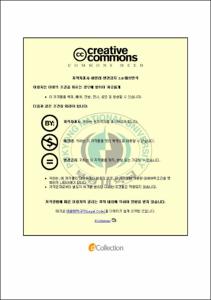은 전극 전해반응기를 이용한 음용수 살균특성에 관한 연구
- Alternative Title
- A study on the sterilization characteristic of drinking water using a electrolyzer with silver electrodes
- Abstract
- In drinking water, the inactivation efficiency for Escherichia coli, which is an indicator microorganism of pathogenic bacteria, has been evaluated by using an electrolyzer with silver electrodes. Chlorination used for serveral decades, has significant disadvantages that the formation of halogenated disinfection by-products (DBPs) such as THMs and HAAs, and low inactivation efficiency for chlorine-resist microorganisms. On the other hand, disinfection method using electrolysis with silver electrodes is attractive due to a higher sterilization without formation of products.
In this study, a sterilization experiment in an electrolyzer with electrodes was carried out to investigate the optimal conditions for electrolysis system.
As the results of the experiment, E.coli was not detected at the conditions of contact time (1 and 2 hour) and silver concentration (0.05, 0.07 and 0.1mg/L).
Silver ions dissolved from silver anode act as a disinfectant because they are positively changed. When they contact a negatively changed microorganism they electrostatically bond to the organism's cell wall and distort it, thereby affecting the cells ability to absorb nutrients. Eventually the cell wall is breached, amino acids are attracted and cell death results.
During the oxidation process silver ions do not get consumed, unlike chlorine that gets destroyed and vaporized. Concentration of silver-ions as low as 0.02mg/L of wat will prevent microbial growth.
Furthermore, it can be found that disinfection was occurred by mean of OH radicals formed in electrolysis and potential drop across the electrodes.
- Issued Date
- 2007
- Awarded Date
- 2007. 8
- Type
- Dissertation
- Publisher
- 부경대학교 대학원
- Alternative Author(s)
- Choi, Sung-Ho
- Affiliation
- 부경대학교 대학원
- Department
- 대학원 환경공학과
- Advisor
- 이제근
- Table Of Contents
- 제 1 장 서론 = 1
제 2 장 문헌연구 = 4
2.1 수인성 질병 미생물 및 지표 미생물 = 4
2.1.1 수중에 존재하는 수인성 질병 미생물 = 4
2.1.2 지표 미생물 = 6
2.2 미생물 수질 기준 = 9
2.3 음용수 살균/소독법의 종류 및 메커니즘 = 10
2.3.1 염소소독 = 10
2.3.2 오존소독 = 12
2.3.3 자외선 살균 = 16
2.3.4 금속 이온에 의한 살균 = 21
2.4 전해 은 이온 살균 = 22
2.4.4 전해반응에 의한 살균영향 = 22
2.4.2 은 이온 살균 메커니즘 = 27
2.4.2.1 은 이온 살균 = 27
2.4.2.2 전위차에 의한 살균영향 = 31
2.4.4.3 OH 라디칼에 의한 살균영향 = 34
제 3 장 재료 및 방법 = 36
3.1 실험장치 = 36
3.1.1 Lab-scale 전해 은 이온 살균장치 = 36
3.1.2 Bench-scale 전해 은이온 살균 시스템 = 39
3.2 실험방법 = 41
3.2.1 Lab-scale 전해 은 이온 시스템 운전 및 시료분석 = 41
3.2.2 Bench-scale 전해 은이온 살균 시스템 운전 = 43
제 4 장 결과 및 고찰 = 44
4.1 음용수 전해 살균 특성 및 은 이온 살균 특성 = 44
4.1.1 Blank Test = 44
4.1.2 은 이온 살균 특성 = 46
4.1.3 전위차에 의한 살균 특성 = 49
4.1.4 OH 라디칼에 의한 살균 특성 = 52
4.1.6 농도에 따른 살균 특성 = 54
4.1.7 시간에 따른 은 이온 살균 특성 = 57
4.2 Bench-scale 전해 시스템 최적 조업조건 도출 = 65
4.1.1 전도도 변화에 따른 전압과 전류밀도의 영향 = 65
4.2.2 전극 간격 변화에 따른 영향 = 67
제 5 장 결론 = 70
참고문헌 = 72
- Degree
- Master
- Files in This Item:
-
-
Download
 은 전극 전해반응기를 이용한 음용수 살균특성에 관한 연구.pdf
기타 데이터 / 1.66 MB / Adobe PDF
은 전극 전해반응기를 이용한 음용수 살균특성에 관한 연구.pdf
기타 데이터 / 1.66 MB / Adobe PDF
-
Items in Repository are protected by copyright, with all rights reserved, unless otherwise indicated.